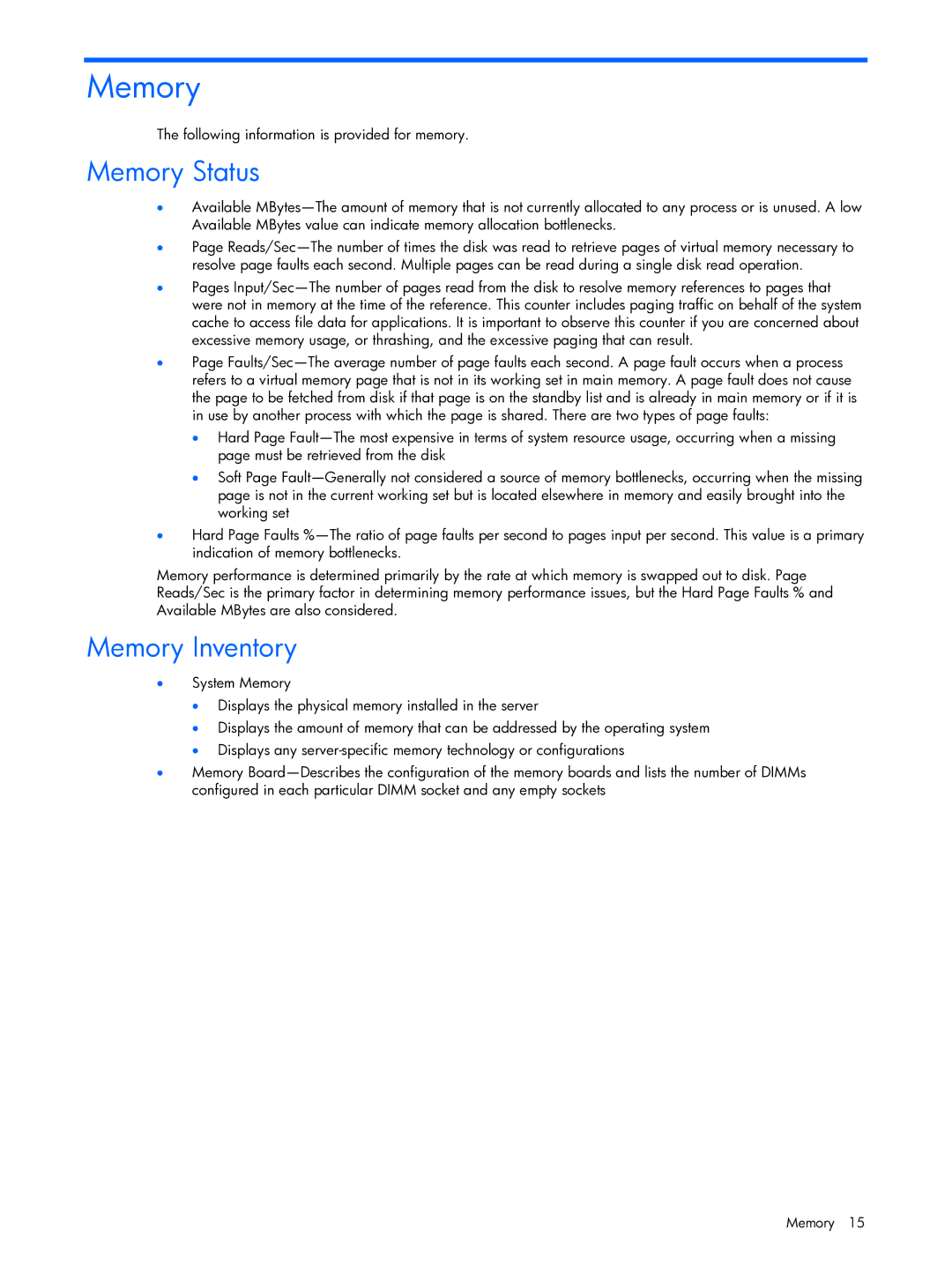Memory
The following information is provided for memory.
Memory Status
•Available MBytes—The amount of memory that is not currently allocated to any process or is unused. A low Available MBytes value can indicate memory allocation bottlenecks.
•Page Reads/Sec—The number of times the disk was read to retrieve pages of virtual memory necessary to resolve page faults each second. Multiple pages can be read during a single disk read operation.
•Pages Input/Sec—The number of pages read from the disk to resolve memory references to pages that were not in memory at the time of the reference. This counter includes paging traffic on behalf of the system cache to access file data for applications. It is important to observe this counter if you are concerned about excessive memory usage, or thrashing, and the excessive paging that can result.
•Page Faults/Sec—The average number of page faults each second. A page fault occurs when a process refers to a virtual memory page that is not in its working set in main memory. A page fault does not cause the page to be fetched from disk if that page is on the standby list and is already in main memory or if it is in use by another process with which the page is shared. There are two types of page faults:
•Hard Page Fault—The most expensive in terms of system resource usage, occurring when a missing page must be retrieved from the disk
•Soft Page Fault—Generally not considered a source of memory bottlenecks, occurring when the missing page is not in the current working set but is located elsewhere in memory and easily brought into the working set
•Hard Page Faults %—The ratio of page faults per second to pages input per second. This value is a primary indication of memory bottlenecks.
Memory performance is determined primarily by the rate at which memory is swapped out to disk. Page Reads/Sec is the primary factor in determining memory performance issues, but the Hard Page Faults % and Available MBytes are also considered.
Memory Inventory
•System Memory
•Displays the physical memory installed in the server
•Displays the amount of memory that can be addressed by the operating system
•Displays any server-specific memory technology or configurations
•Memory Board—Describes the configuration of the memory boards and lists the number of DIMMs configured in each particular DIMM socket and any empty sockets
Memory 15
